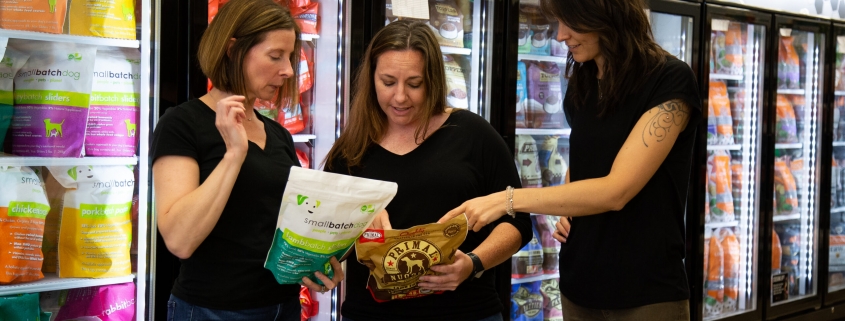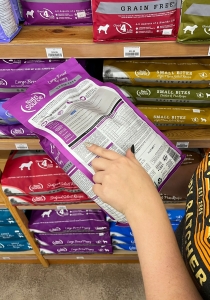Cannabis: An Ancient Crop with Claims of Health Benefits
The use of cannabis dates back to ancient civilizations, with records of its use dating back to 6,000 years ago.1 Claims of health benefits included constipation, gout, rheumatism, and absent-mindedness.2 However, it wasn’t until recent years that numerous potential therapeutic uses of cannabis for pets have surfaced.
While there is more research for human use of CBD, animal research into CBD is lacking. The minimal research that is available needs significant expansion and validation. It’s important to remember that just because something is published, it doesn’t mean it’s entirely accurate or even applicable to the real world. Therefore, it is essential to understand the regulation, safety, and legality surrounding pet supplements.
Today, there is a plethora of CBD supplements available to people and pets. However, with so much misinformation and dangerous information on the market, it can be challenging to determine what is safe and legal.
In this multi-part series, we will explore the regulation, how CBD works, and the safety and legality surrounding pet supplements. Since this article serves as our opening to the discussion, we’ll cover the basics: the difference between hemp and marijuana, how CBD works, and how it’s absorbed.
Classification & Cannabinoids
Cannabis can be broadly classified as either hemp or marijuana, and that classification depends on the concentration of the cannabinoid Delta 9-tetrahydrocannabinol (more commonly known as THC) and other cannabinoids they contain.3 The plants contain more than 400 chemicals but the cannabinoid THC is the one with the most recognition for its psychotropic “high” effect.4 Because THC is highly lipid-soluble and is distributed in fat, liver, brain, and renal tissue in the body.
The other cannabinoid that has gained attention is cannabidiol (or CBD), which is the focus of this discussion. It was first isolated from the marijuana plant by Roger Adams in the 1940’s, although it wasn’t chemically described until 1964 by Raphael Mechoulam. Today CBD is commonly used in a variety of human and pet supplements and edibles for pets and people. This cannabinoid has a lot of focus due to its potential, not proven, the ability to help manage anxiety, insomnia, and pain in humans. As already discussed, despite many anecdotal reports and claims more research is needed to determine the effectiveness, dosing, and safety of CBD and other cannabinoids in pets. However, as mentioned earlier, this is also true for many other types of supplements for pets – in fact, a lot of human data is used in order to promote the benefits to pets.
How CBD Works
There are three types of cannabinoids. Like neurotransmitters, all types of cannabinoids work by triggering a response from a receptor. Cannabinoids interact with receptors in the endocannabinoid system (ECS). The main function of the ECS is to maintain body homeostasis— which is biological harmony in response to changes in the environment.5 CBD is known as a phytocannabinoid, which comes from plants. For context, several plants beyond cannabis also produce phytocannabinoids, including cacao and echinacea. All mammals also produce their own cannabinoids, called endocannabinoids. The third type of cannabinoids is synthetic cannabinoids which are made in a laboratory.
Phytocannabinoids, such as CBD work to inhibit the activity of ECS receptors, or in other words; limit activity or turn them off. The endocannabinoid system (ECS) has a role in the regulation of pain, pleasure, digestion, metabolism, inflammation, sleep, movement, neuroprotection, immune function, appetite, body temperature, mood, memory, and cardiovascular function.6,7
Since CBD influences the ECS, there is potentially a wide range of benefits to the therapeutic use of CBD containing supplements and much of the theory behind CBD comes from this. Many anecdotal and case reports reflect these benefits; however, the problem is that there are few evidence-backed indications of these benefits in the mainstream scientific literature. This is complicated by the fact that many companies and non-scientific blogs continue to make claims of benefit giving the consumer and even retailers the perception of more evidence than there is. This climate has created a lot of trust and transparency issues for medical practitioners and CBD manufacturers.
There are two main cannabinoid receptors in humans and dogs, CB1 found primarily in the central nervous system and CB2 which are peripheral and immune-modulating.4,8 CB1 activity is believed to be responsible for most endocannabinoid clinical effects and benefits.
Dosing & Absorption
CBD dosing & bioavailability, or the body’s ability to absorb CBD containing products are other factors to consider. There are several different types of products that have varying levels of bioavailability. For example, CBD itself is a fat-soluble cannabinoid, like THC. Since our bodies are mostly water traditional CBD oils not absorbed well in the gut, and therefore only have adequate absorption via the oral mucus membrane. Humans for example would need to hold a traditional CBD oil in their mouth for about 90 seconds for best absorption – not exactly realistic for dogs or cats.
Fortunately, technology has offered solutions to the absorption challenges of traditional CBD oils. There are companies that have altered their products to be absorbed through liposome (fat) technology or nano-particle technologies that allow for oral use and absorption through the GI tract when consumed. The later technology has the highest bioavailability and allows CBD to cross the blood-brain barrier since the particles are so small. However – most CBD oils, treats, and edibles available are not nano-particle, so it’s important to ask. In addition, edibles, especially dog treats that have traditional oil have likely had a heat process applied (i.e. baking). Heat significantly reduces the bioavailability and therefore effectiveness of the CBD within the product.
Summary
CBD can come from hemp or marijuana, with hemp lacking enough THC to product the psychotropic “high” effect marijuana is most known for. Although Hemp based-CBD supplements are widely available on the market, the reality is that there is a real lack of information regarding its exact benefit or benefits. However, we know enough about the human and animal endocannabinoid system to theorize how and what these supplements may be useful for. The type of CBD is important when choosing a product because not all are easily absorbed or effective due to a variety of processing techniques.
This article is part of a Hemp Education Series. Over the course of this series, we will further explore hemp legality, safety, dosing, and how to spot quality from potentially dangerous products.
For further reading, continue to part II, III, IV
About the Author: Nicole Cammack
Nicci is the owner of award-winning NorthPoint Pets & Company, in Connecticut. She is also the Founder & CEO of Undogmatic Inc. Her undergraduate and graduate education includes biology, chemistry, business, and nutrition. She has worked in the pharmaceutical industry on multiple R&D projects and has had the privilege to learn from leading international figures in the human and pet health industry. She regularly lectures at national conferences, including federal, state, and municipal K9 events. Her current research involves identifying pathogenic risk factors and transmission among raw fed pets through a comprehensive worldwide survey.
www.northpointpets.com
www.undogmaticinc.com
References
1. Sawler J, Stout JM, Gardner KM, et al. The Genetic Structure of Marijuana and Hemp. PLoS ONE. 2015;10(8). doi:10.1371/journal.pone.0133292
2. Marijuana, the Second Trip. Revised Edition by Bloomquist, Edward R.: Good PAPERBACK | Earthlight Books. Accessed June 3, 2020. https://www.abebooks.com/Marijuana-Second-Trip-Revised-Edition-Bloomquist/22676164305/bd
3. Kogan L, Schoenfeld-Tacher R, Hellyer P, Rishniw M. US Veterinarians’ Knowledge, Experience, and Perception Regarding the Use of Cannabidiol for Canine Medical Conditions. Front Vet Sci. 2019;5. doi:10.3389/fvets.2018.00338
4. Fitzgerald KT, Bronstein AC, Newquist KL. Marijuana Poisoning. Top Companion Anim Med. 2013;28(1):8-12. doi:10.1053/j.tcam.2013.03.004
5. Mackie K. Cannabinoid Receptors: Where They are and What They do. J Neuroendocrinol. 2008;20(s1):10-14. doi:10.1111/j.1365-2826.2008.01671.x
6. Maroon J, Bost J. Review of the neurological benefits of phytocannabinoids. Surg Neurol Int. 2018;9. doi:10.4103/sni.sni_45_18
7. Levinsohn EA, Hill KP. Clinical uses of cannabis and cannabinoids in the United States. J Neurol Sci. 2020;411:116717. doi:10.1016/j.jns.2020.116717
References
8. Mechanisms of CB1 receptor signaling: endocannabinoid modulation of synaptic strength | International Journal of Obesity. Accessed June 5, 2020. https://www.nature.com/articles/0803273
9. Commissioner O of the. FDA Regulation of Cannabis and Cannabis-Derived Products, Including Cannabidiol (CBD). FDA. Published online March 10, 2020. Accessed June 4, 2020. https://www.fda.gov/news-events/public-health-focus/fda-regulation-cannabis-and-cannabis-derived-products-including-cannabidiol-cbd
10. Commissioner O of the. FDA Warns Companies Illegally Selling CBD Products to Treat Medical Conditions, Opioid Addiction. FDA. Published April 26, 2020. Accessed June 6, 2020. https://www.fda.gov/news-events/press-announcements/fda-warns-companies-illegally-selling-cbd-products-treat-medical-conditions-opioid-addiction
11. How CBD pet product brands avoid federal warnings. Accessed June 12, 2020. https://www.petfoodindustry.com/articles/8793-how-cbd-pet-product-brands-avoid-federal-warnings
12. Drug Scheduling. Accessed June 6, 2020. https://www.dea.gov/drug- scheduling
13. AVMA weighs in at cannabis hearing. American Veterinary Medical Association. Accessed June 17, 2020. https://www.avma.org/javma-news/2019-08-15/avma-weighs-cannabis-hearing
14. FAQs. NASC LIVE. Accessed June 13, 2020. https://nasc.cc/faqs/
15. Resnik DB. Beyond post-marketing research and MedWatch: Long-term studies of drug risks. Drug Des Devel Ther. 2007;1:1-5.
16. Deabold KA, Schwark WS, Wolf L, Wakshlag JJ. Single-Dose Pharmacokinetics and Preliminary Safety Assessment with Use of CBD-Rich Hemp Nutraceutical in Healthy Dogs and Cats. Animals. 2019;9(10):832. doi:10.3390/ani9100832
17. McGrath S, Bartner LR, Rao S, Kogan LR, Hellyer PW. A Report of Adverse Effects Associated With the Administration of Cannabidiol in Healthy Dogs. :5.
18. Commissioner O of the. What You Need to Know (And What We’re Working to Find Out) About Products Containing Cannabis or Cannabis-derived Compounds, Including CBD. FDA. Published online March 3, 2020. Accessed June 12, 2020. https://www.fda.gov/consumers/consumer-updates/what-you-need-know-and-what-were-working-find-out-about-products-containing-cannabis-or-cannabis
19. Wakshlag JJ, Cital S, Eaton SJ, Prussin R, Hudalla C. Cannabinoid, Terpene, and Heavy Metal Analysis of 29 Over-the-Counter Commercial Veterinary Hemp Supplements. Vet Med Res Rep. 2020;11:45-55. doi:10.2147/VMRR.S248712




 It’s a common misnomer that the only cause of tear staining in our pets is the overproduction of their tears. Aside from a blocked tear duct and breed, there are plenty of other causes that complicate the main factors listed above:
It’s a common misnomer that the only cause of tear staining in our pets is the overproduction of their tears. Aside from a blocked tear duct and breed, there are plenty of other causes that complicate the main factors listed above:















